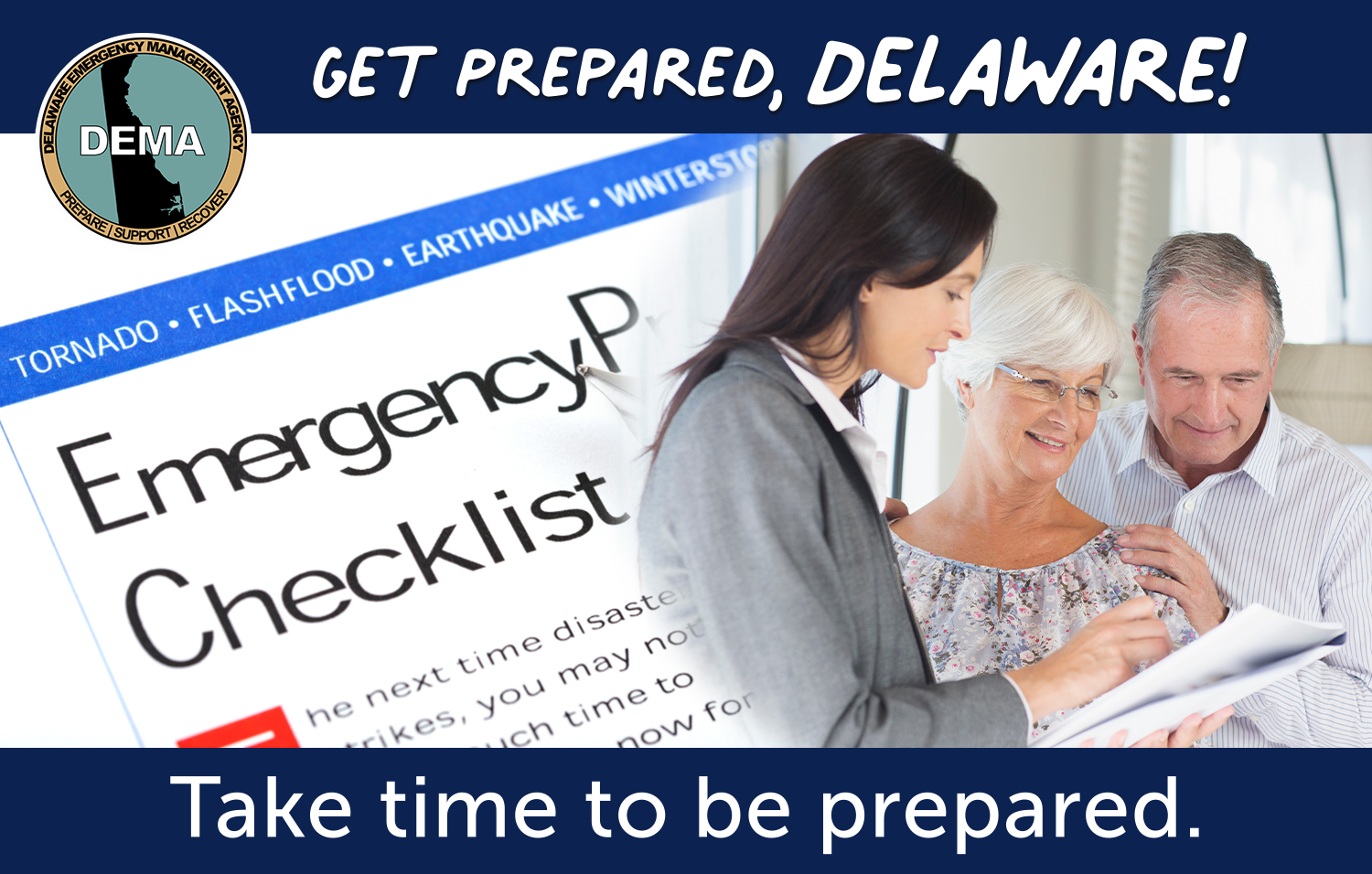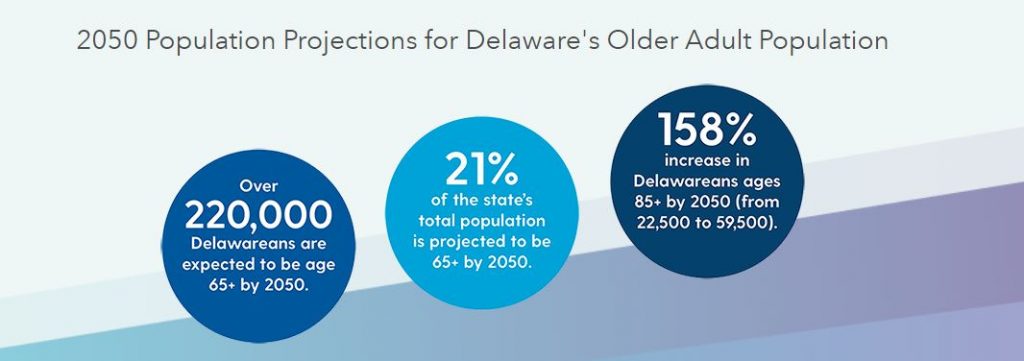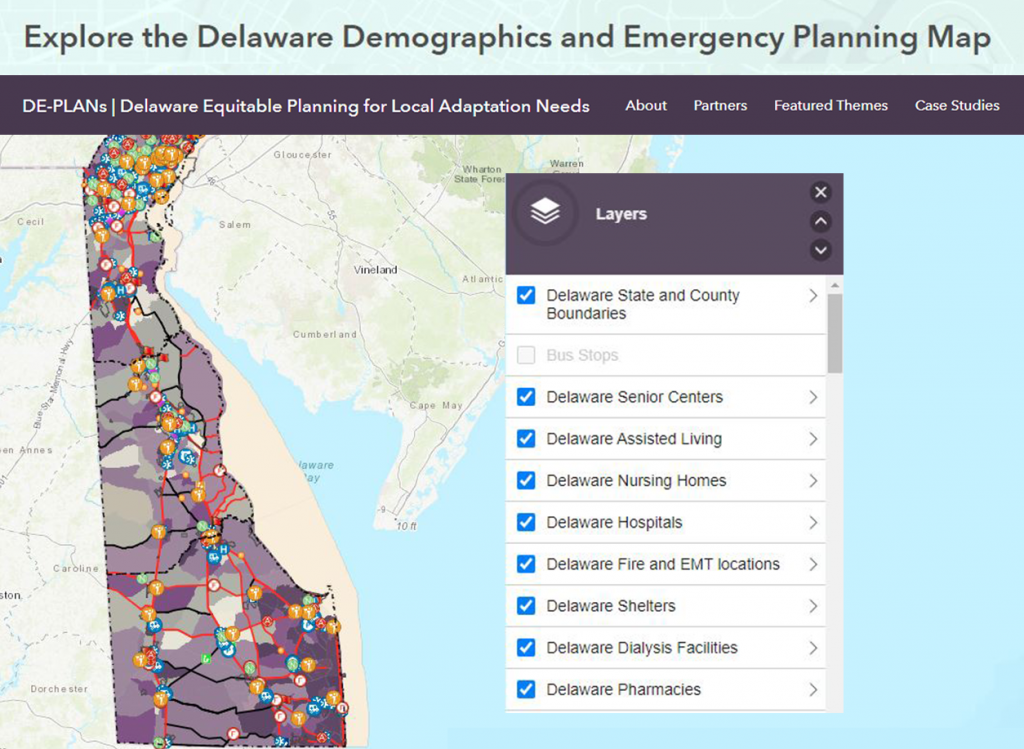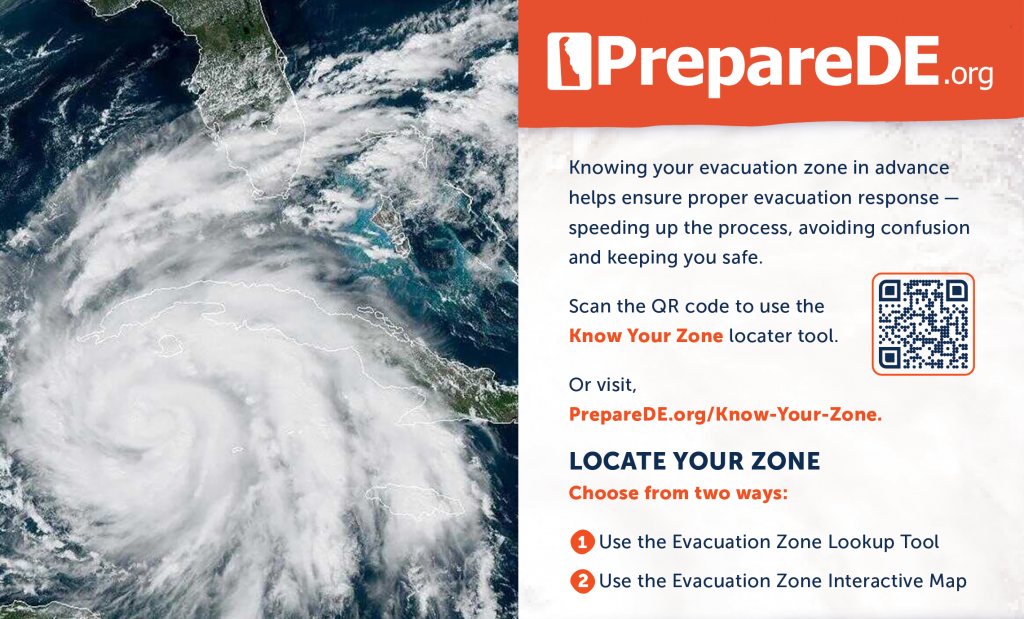September is Preparedness Month in Delaware
Delaware Emergency Management Agency | Department of Safety and Homeland Security | News | Date Posted: Thursday, August 31, 2023
Delaware Emergency Management Agency | Department of Safety and Homeland Security | News | Date Posted: Thursday, August 31, 2023

SMYRNA, Del. — Governor Carney is proclaiming September as Preparedness Month in Delaware to highlight the many ways families and businesses can “make a plan, build a kit, and stay informed” to be better prepared for emergencies and natural disasters. September coincides with the peak months for Atlantic hurricane season, which underscores the need for readiness. The 2023 theme is “Preparing Older Adults,” highlighting key challenges Delaware seniors can face when it comes to preparedness.
U.S. News reports Delaware is the 10th fastest-aging state in the U.S. The most recent U.S. Census estimates about 21 percent of the population is over 65, and more than 40 percent is 50 and older, according to the American Association of Retired Persons (AARP). According to FEMA’s 2022 National Household Survey, older adults were more likely than younger adults to know their evacuation routes, document and insure their property, safeguard their documents, and save for a rainy day. However, they were less likely to sign up for alerts and warnings, make a plan, practice emergency drills or habits, and get involved in their community.
According to AARP, several factors make older adults more vulnerable to the effects of disasters:


In response to these challenges, Delaware now has a new website, DE-PLANs, that offers a “one-stop resource for aiding emergency management, resilience planning, and outreach for Delaware’s older adults. “DE-PLANs” is an acronym for “Delaware Equitable Planning for Local Adaptation Needs.”
Funded by the Delaware Emergency Management Agency and administered by Delaware Sea Grant and the University of Delaware Institute for Public Administration, the site combines Delaware-specific information with resources and GIS data to build state and local capacity and policy development. The platform compiles social vulnerability data, social services, infrastructure, and hazard information to support state, county, and local planning for emergency management preparedness and aging in place.
Built upon a Geographic Information Systems (GIS) framework, the site features these valuable resources:
For more information:
Delaware Sea Grant: Danielle Swallow, 302-645-4258, dswallow@udel.edu
University of Delaware Institute for Public Administration: Julie O’Hanlon, 302-831-6224, jusmith@udel.edu

“Family Emergency Preparedness Day” returns to Camden’s Brecknock Park on Saturday, September 23, from 10 a.m. to 2 p.m. This free event highlights public safety and readiness planning in a fun, family environment with activities, food, giveaways, and demonstrations. Last year, over 35 first response agencies and social service organizations participated, providing CPR training, car seat safety checks, a car extrication demo, state police helicopter, and appearances by Smokey Bear and Sparky the Fire Dog. There will be food as well as free Kona Ice for the first 500 attendees to complete an activity challenge.

New this year, “Know Your Zone” is an important resource for emergency evacuation in Delaware. Evacuation zones – identified as either A, B, C or D – encompass low-lying areas susceptible to flooding and storm surge. When disasters happen, officials issue evacuation warnings or mandatory orders for communities in impacted areas. It’s important to know your zone before a disaster strikes because it includes specific Delaware Evacuation Routes and proper guidance in the event of an emergency. Evacuating in a planned method by zone reduces unnecessary travel, roadway congestion and overcrowding, and allows for quicker, safer movement during emergencies and disasters. Users can locate their zone in two ways: the Evacuation Zone Lookup Tool or Interactive Evacuation Zone Map.
PrepareDE.org is Delaware’s hub for preparedness: it houses a wealth of resources and fact sheets to help families get ready for any emergency. It sports a new, mobile-friendly design with bright colors and easy-to-navigate sections. The site is a cooperative effort by the Delaware Emergency Management Agency, Delaware Citizen Corps, and the DHSS Division of Public Health Office of Preparedness.
Resources and information are grouped into major categories with step-by-step sections and guides:
Social Media: Delaware Emergency Management Agency on Facebook and X and Instagram
Keep up to date by receiving a daily digest email, around noon, of current news release posts from state agencies on news.delaware.gov.
Here you can subscribe to future news updates.
Delaware Emergency Management Agency | Department of Safety and Homeland Security | News | Date Posted: Thursday, August 31, 2023

SMYRNA, Del. — Governor Carney is proclaiming September as Preparedness Month in Delaware to highlight the many ways families and businesses can “make a plan, build a kit, and stay informed” to be better prepared for emergencies and natural disasters. September coincides with the peak months for Atlantic hurricane season, which underscores the need for readiness. The 2023 theme is “Preparing Older Adults,” highlighting key challenges Delaware seniors can face when it comes to preparedness.
U.S. News reports Delaware is the 10th fastest-aging state in the U.S. The most recent U.S. Census estimates about 21 percent of the population is over 65, and more than 40 percent is 50 and older, according to the American Association of Retired Persons (AARP). According to FEMA’s 2022 National Household Survey, older adults were more likely than younger adults to know their evacuation routes, document and insure their property, safeguard their documents, and save for a rainy day. However, they were less likely to sign up for alerts and warnings, make a plan, practice emergency drills or habits, and get involved in their community.
According to AARP, several factors make older adults more vulnerable to the effects of disasters:


In response to these challenges, Delaware now has a new website, DE-PLANs, that offers a “one-stop resource for aiding emergency management, resilience planning, and outreach for Delaware’s older adults. “DE-PLANs” is an acronym for “Delaware Equitable Planning for Local Adaptation Needs.”
Funded by the Delaware Emergency Management Agency and administered by Delaware Sea Grant and the University of Delaware Institute for Public Administration, the site combines Delaware-specific information with resources and GIS data to build state and local capacity and policy development. The platform compiles social vulnerability data, social services, infrastructure, and hazard information to support state, county, and local planning for emergency management preparedness and aging in place.
Built upon a Geographic Information Systems (GIS) framework, the site features these valuable resources:
For more information:
Delaware Sea Grant: Danielle Swallow, 302-645-4258, dswallow@udel.edu
University of Delaware Institute for Public Administration: Julie O’Hanlon, 302-831-6224, jusmith@udel.edu

“Family Emergency Preparedness Day” returns to Camden’s Brecknock Park on Saturday, September 23, from 10 a.m. to 2 p.m. This free event highlights public safety and readiness planning in a fun, family environment with activities, food, giveaways, and demonstrations. Last year, over 35 first response agencies and social service organizations participated, providing CPR training, car seat safety checks, a car extrication demo, state police helicopter, and appearances by Smokey Bear and Sparky the Fire Dog. There will be food as well as free Kona Ice for the first 500 attendees to complete an activity challenge.

New this year, “Know Your Zone” is an important resource for emergency evacuation in Delaware. Evacuation zones – identified as either A, B, C or D – encompass low-lying areas susceptible to flooding and storm surge. When disasters happen, officials issue evacuation warnings or mandatory orders for communities in impacted areas. It’s important to know your zone before a disaster strikes because it includes specific Delaware Evacuation Routes and proper guidance in the event of an emergency. Evacuating in a planned method by zone reduces unnecessary travel, roadway congestion and overcrowding, and allows for quicker, safer movement during emergencies and disasters. Users can locate their zone in two ways: the Evacuation Zone Lookup Tool or Interactive Evacuation Zone Map.
PrepareDE.org is Delaware’s hub for preparedness: it houses a wealth of resources and fact sheets to help families get ready for any emergency. It sports a new, mobile-friendly design with bright colors and easy-to-navigate sections. The site is a cooperative effort by the Delaware Emergency Management Agency, Delaware Citizen Corps, and the DHSS Division of Public Health Office of Preparedness.
Resources and information are grouped into major categories with step-by-step sections and guides:
Social Media: Delaware Emergency Management Agency on Facebook and X and Instagram
Keep up to date by receiving a daily digest email, around noon, of current news release posts from state agencies on news.delaware.gov.
Here you can subscribe to future news updates.